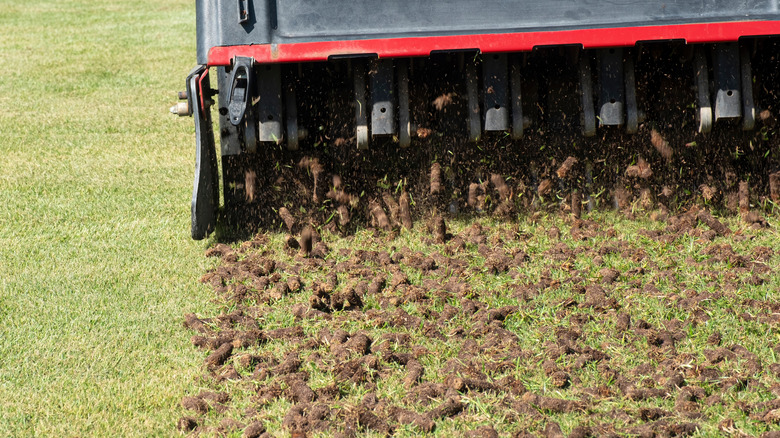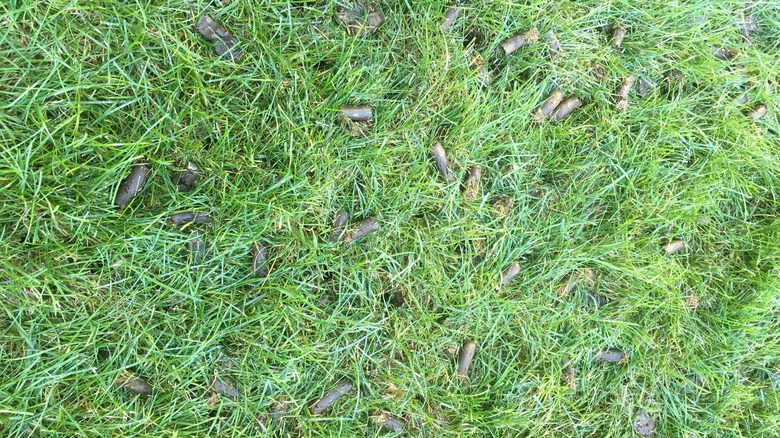Why You Should Never Rake Your Lawn After Aerating
The lawn you're spending so much time and money on can look messy at best or downright disturbing at worst after a round of core aeration. Unsurprisingly, the natural impulse for many is to rake that mess up. But TikTok content creator @elitelawncare wants you to leave the soil plugs where they lie. This idea has some commenters in an uproar, but most lawn care experts agree that removing the nutrients and microbes contained in the soil plugs is unnecessary and probably bad for the lawn.
Core aeration is one of the natural ways to keep your lawn green. It's a process in which a machine punches into the lawn and removes many cylindrical bits composed of grass, thatch, and soil. The purpose is to loosen up soil that has been compacted (by foot traffic, mowing, etc.) and has a thick thatch layer so that water and oxygen can more easily reach plant roots. The problem is that the core aeration process leaves those little cylinders of soil all over the place, and they're not the most attractive of lawn ornaments. Thankfully, the plugs tend to break down and work their way back into the soil within a couple of weeks.
How to reincorporate the removed cores
While some research has suggested that core aeration isn't nearly as effective as lawn care consumers believe, there's one destination you can depend on to get nice-looking grass right: golf courses. The United States Golf Association says that putting greens benefit from core aeration in several key ways, and not only during off-seasons. However, they recommend adding a layer of topdressing to help break down thatch and even out the surface while aeration plugs reintegrate into the ground.
Some lawn care pros say you can speed up the process of breaking up core aeration plugs by mowing over them with a mower deck set to its lowest setting. Others recommend using a lawn drag, an implement that's dragged behind a mower or lawn tractor to level the ground. You might have seen one used on a baseball field. Lawn drags can take many forms – a bar, a mat, a section of chain-link fencing, or even a pallet. Others, perhaps less concerned about the opinions of their neighbors, say you can just leave the plugs on the surface of the lawn to break down naturally. That said, it helps to wait until the plugs have dried before attempting to reincorporate them into your lawn.

